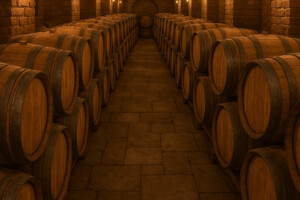
A Denomination that is already sensitized to environmental and social issues, starting with systems to manage interventions in the vineyard, from the controlled use of phytosanitary products, with methods and tools for analysis and monitoring such as meteorological huts (used by 31.4% of sparkling wine houses), to consulting the Consortium’s Defense Bulletins (70.3% of bottlers and 76.7% of companies). But also for the use of integrated pest management systems in the vineyards, such as sexual confusion (22.3% of sparkling wine houses and 7.9% of companies), and defense techniques that allow stimulating the plant's natural processes, such as biostimulants (used by 31.4% and 21%, respectively) and corroborants (26.45% and 21%), for greater tolerance to abiotic stresses caused by environmental factors and to reduce treatments with phytosanitary products. In general, the long-standing commitment of the wineries - which are giving more and more space to young people, whose entry into operational, coordinating or managerial roles has grown by 44.5% in the last 5 years - in sustainable vineyard management, guided by the Viticultural Protocol, is fostering a rapid growth of the Sqnpi-certified vineyard area-National Quality System of Integrated Production that follows the directions of the Integrated Production specification, which is 3,039 hectares, 34.9% of the total area of the Denomination: a value that has definitely increased since 2021 (+152.7%), when it was 1,203 hectares. This is the snapshot taken by the first “Denomination Sustainability Report”, commissioned by the Consorzio di Tutela del Conegliano Valdobbiadene Prosecco Docg to “measure” its performance against the three pillars of sustainability (economic, environmental and social), presented, yesterday at Villa dei Cedri in Valdobbiadene, and edited by Cirve-Centro interdipartimentale per la ricerca in viticoltura e enologia di Conegliano and Professor Eugenio Pomarici’s team (like the “Economic Report”, which, in 2023, recorded -10% in sales, but +4.7% in value for Veneto bubbles.
A consortium that, even after the issues discussed in recent months over the protection of the brand name - whose only correct name is “Conegliano Valdobbiadene Prosecco Docg” - also takes the first step toward the “Territory Pact” together with the 15 mayors of Conegliano Valdobbiadene.
“After the virtuous path of the Viticultural Protocol, which accompanied the winegrowers and all the actors of the Denomination towards a more sustainable approach to vineyard management, today we are presenting a useful tool to take a snapshot of the many steps forward taken by the Denomination and to provide us with the cardinal points to identify more precisely the path ahead of us as producers and as part of a dynamic and active community. Moreover, it is Europe itself that is asking us to be receptive to environmental needs that can no longer be postponed”, stressed Consortium President Elvira Bortolomiol.
“The discussions that, at the European level, have led to the approval of the new Single Text on quality productions have always hinged on four pillars”, explained Paolo De Castro, vice-president of the Agriculture and Rural Development Commission of the EU Parliament, “from strengthening the role of consortia, for the benefit of which we have included new powers, to greater protection, including in the internet domain system and when PGIs are used as ingredients; from simplification, with definite timeframes for the registration and modification of production specifications; transparency, with the obligation to indicate on the label of any PDO and PGI the name of the producer; and sustainability. On the subject of which, and to better communicate to consumers the commitment of winemakers, we insisted on providing within the new Regulations the requirement for consortia to prepare a sustainability report explaining what they do in terms of environmental, economic, social and animal welfare sustainability, to which Prosecco Docg has agreed in advance”.
“The Hills between Conegliano and Valdobbiadene are a UNESCO World Heritage Site, and the beauty of the landscape embroidered with vineyards is also thanks to the attention of the winegrowers to the land and its biodiversity”, added Consortium director Diego Tomasi. “Suffice it to say that 57% is covered by wooded areas, 30% by vineyards, 9% by other crops, and 4% is urbanized”.
Good environmental practices are also a lever for social and economic sustainability. Actions to mitigate the use of plant protection products and the path that has led to the elimination of the most impactful active ingredients have positive effects on the protection of the health and safety of the community and workers. Actions that, together with the pursuit of ever higher quality standards and careful management of the supply, have made it possible to reinforce the market positioning of Conegliano Valdobbiadene Prosecco Docg in 2022 as well, confirming it as a wine appreciated all over the world that allows a satisfactory remuneration to the companies that produce it. Finally, a look at social sustainability: the Report shows how companies are making more and more room for young people, whose entry into operational, coordination or management roles has grown by 44.5% in the last 5 years; in 2022, 37.3% of workers are under 40 years old, with an average of 6.3 young people per company. Also in 2022, the Consortium, in addition to ensuring its presence at major events organized among the Hills, invested 100,000 euros to sponsor events, cultural awards and local associations, such as the prestigious “Campiello Giovani” Prize.
Copyright © 2000/2025
Contatti: info@winenews.it
Seguici anche su Twitter: @WineNewsIt
Seguici anche su Facebook: @winenewsit
Questo articolo è tratto dall'archivio di WineNews - Tutti i diritti riservati - Copyright © 2000/2025